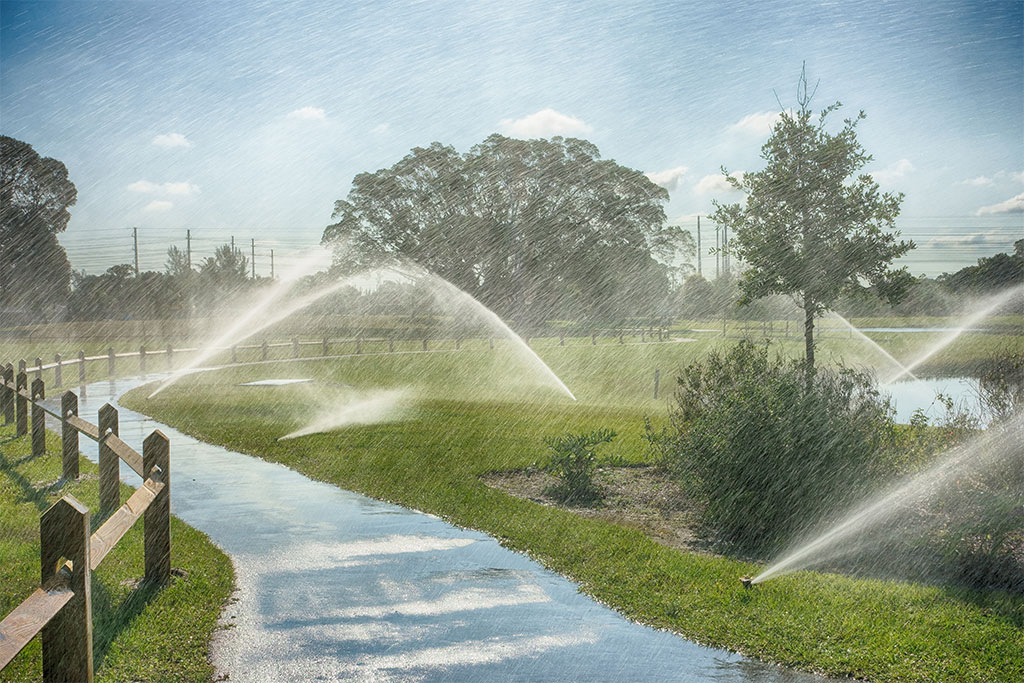November 1, 2025
November marks a key transition for Gainesville and Alachua County landscapes. As temperatures drop and rainfall evens out, irrigation demands shift - but not every community adjusts in time.
For HOA boards, this change isn't just about efficiency; it's about compliance, plant health, and fiscal responsibility.
Starting November 1, Alachua County adopts the one-day-per-week winter irrigation schedule, requiring communities to update all controllers and communicate changes to residents. Allegiance Landscaping works directly with property managers to ensure full compliance - so landscapes stay healthy, and boards avoid violations or wasted water.

| Property Type | Approved Watering Day | Time of Day | Limits |
|---|---|---|---|
| Odd-numbered addresses | Saturday | Before 10 a.m. or after 4 p.m. | Max 1 hour per zone / 3⁄4 inch total |
| Even-numbered addresses | Sunday | Before 10 a.m. or after 4 p.m. | Max 1 hour per zone / 3⁄4 inch total |
| Non-residential & common areas | Tuesday | Before 10 a.m. or after 4 p.m. | Max 1 hour per zone / 3⁄4 inch total |
(Source: Alachua County Environmental Protection Dept.; SJRWMD Irrigation Rules)
These rules apply to all water sources - wells, reclaimed, and municipal - and remain in effect through Eastern Standard Time.
During summer, high heat and evapotranspiration justify longer watering cycles. But once cooler weather arrives:
By November, failing to switch to the one-day schedule wastes thousands of gallons - and can quickly escalate into turf loss or fines. Allegiance's irrigation audits prevent both.
Fall is the best time for small system improvements that make big budget impacts:
These steps reduce HOA water bills and keep your landscape's winter look clean and consistent.
When boards communicate proactively, residents become allies. Use newsletters, websites, or bulletin boards to explain:
Many residents assume reduced watering equals neglect. Allegiance helps HOAs craft short communication templates showing that these changes are about strategy, not cost-cutting.

As you review next year's landscape budget, now's the time to consider upgrades that automate compliance:
Installing or retrofitting during cooler months minimizes turf disturbance and creates measurable water savings year-round.
Alachua County's irrigation and fertilizer ordinances work together:
Following both ensures healthy root zones, clean runoff, and regulatory peace of mind.
Our irrigation management teams handle:
Each report clearly shows compliance status, water savings, and any maintenance needs - a complete system snapshot your management company can file with confidence.
For HOAs, following irrigation ordinances isn't just about rules - it's about stewardship. Smart boards treat water like the limited resource it is.
This November, as Gainesville enters its dry season, Allegiance Landscaping reminds every HOA: the difference between “maintained” and “managed” is in the details.
From controllers to communication, excellence is achieved before problems appear.
Destination: Excellence.